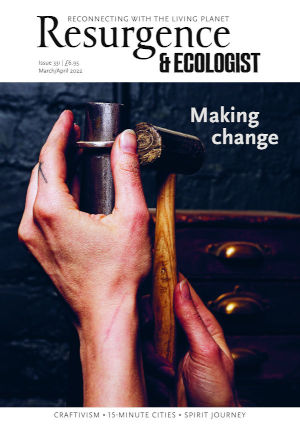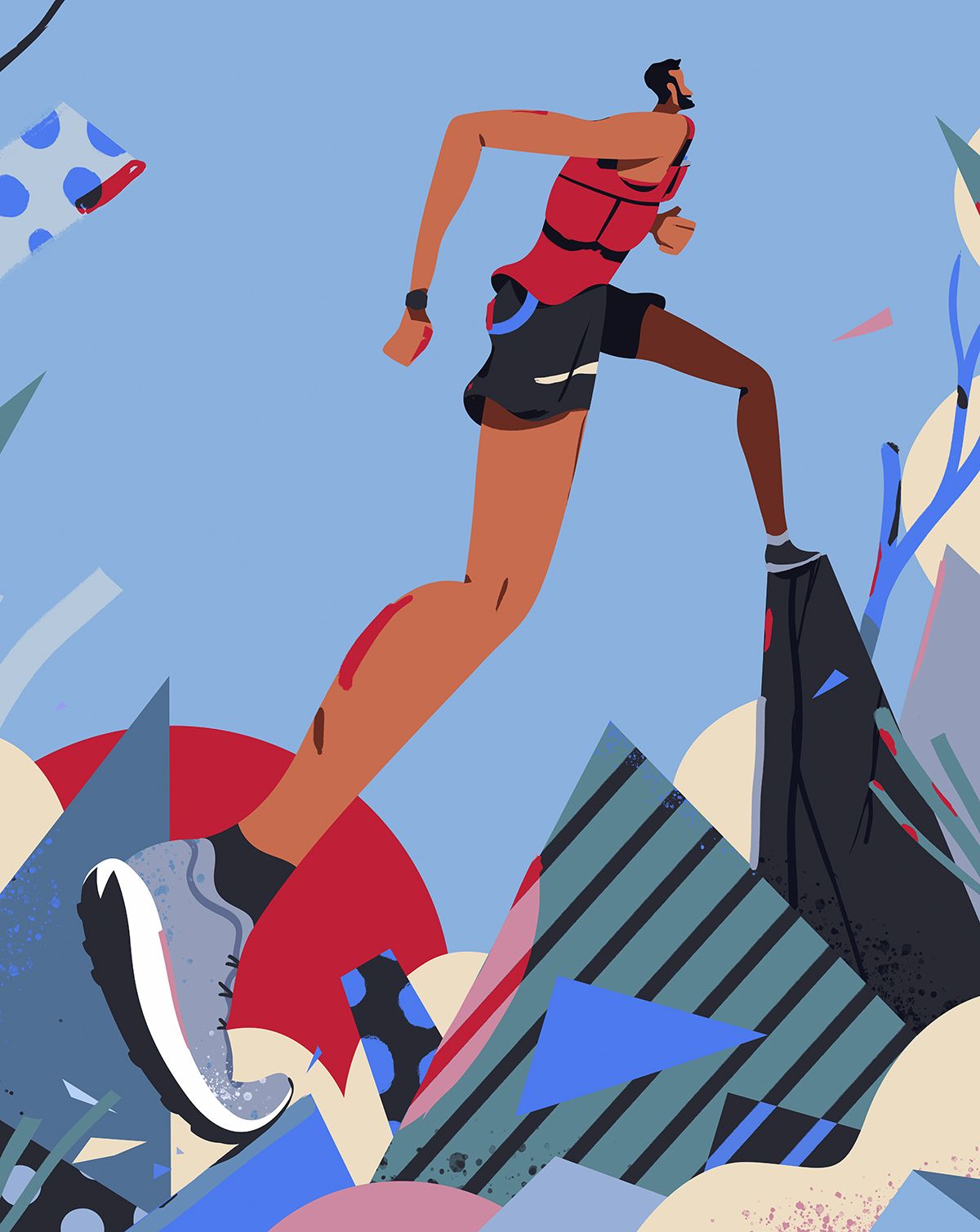In 2004, at the age of 19, Noé Álvarez joined a group of people running across the Americas. He was like any young person seeking initiation into adulthood, validation and a chance to define himself, but he was also driven specifically by the weight of his parents’ trauma as Mexicans who had undergone a perilous migration to the United States in their teens, their shared desire that he escape the labour of the fruit industry, and his difficulty adjusting to life at a prestigious private college. These experiences drew him to Peace and Dignity Journeys (PDJ), an Indigenous First Nation movement that initiates spiritual runs across Indigenous lands and cultures.
“In order to become someone else – achieve the full potential of my being – I have to engage in new imaginative acts. Running is one such act for me, a bonding with the world through the soles of my feet,” Álvarez writes in his 2020 memoir, Spirit Run. Within PDJ, the run is a sacred endeavour and a way to further the prophecy of the Eagle and Condor. According to a PDJ brochure Álvarez quotes, this prophecy “supports the goal of all Indigenous people and nations uniting after centuries of colonization”.
Native American communities are numerous and diverse, and there are more than 500 tribes within the boundaries of the contemporary United States alone. Historically, running has been integral to a lot of these cultures, for practical communications and deliveries, game-capturing, health and sport, and for spiritual and ceremonial purposes. And running continues to be an important activity for many Indigenous people, for some of the reasons above, and/or as a way to socialise or practise social activism.
In 1990, more than 200 representatives of Indigenous nations of the western hemisphere met and came up with the idea for PDJ, which aims, generally, to recognise, honour and heal Indigenous communities and the Earth, and the relationships between them. The runs occur every four years and include Native and non-Native participants.
In Spirit Run, we meet Álvarez as a teenager preparing to leave behind his known world to attend Whitman College on a full scholarship. His earliest memories of running include weaving through the apple orchard where his family worked in Washington State, fleeing gang members in his community, and seeking refuge along the Yakima River. The concept of being on the move has deep roots for him – it’s tied to his migrant heritage and to a sense of displacement and survival-based flight. Over time, running becomes for him an increasingly investigative, restorative and imaginative act. He tells Resurgence & Ecologist, “I had to transform my relationship to what it meant to move; to find power and healing in movement.”
During Álvarez’s freshman year, he struggles to adjust to campus life. He hears Pacquiao, a PDJ leader, give a talk on spiritual runs as a way to honour and reinvigorate Indigenous cultures. This reawakens Álvarez’s interest in his heritage – his paternal grandfather is of Purépecha Indigenous descent, of the southern mountains of Michoacán, Mexico. As he learns more about PDJ, a spark ignites that will drive him, by the soles of his young feet, onto a 6,300-mile trek. Most of Spirit Run details Álvarez’s run from Canada to Guatemala – an arduous physical and metaphysical journey – interspersed with vignettes of his family’s past.
Participants in this run come from diverse cultures and represent many Native peoples, including the Dené, Secwépemc, Gitxsan, Dakelh, Apache, Tohono O’odham, Seri, Purépecha, Maya and others. Over sacred lands and through rural and urban landscapes, they run in waves, 10 to 30 miles a day, transported between cycles in vans. They carry ceremonial and symbolic staffs. They rest at night outdoors or in neighbourhood centres, casinos, reservations and other sites where they are welcomed. Indigenous communities donate food and shelter, and share prayers, stories and songs.
Just as Álvarez is driven by his parents’ stories, other runners carry burdens as they propel themselves across the Americas. Some lost people on the Highway of Tears, a corridor in British Columbia, Canada, where many Indigenous women have disappeared and/or been murdered. Some have relatives who were taken to the residential schools of Canada. Like the US Indian boarding-school system, these institutions removed Native children from their families and into environments of cultural assimilation, forced labour and abuse. Other runners have known gang violence, substance use disorder and poverty. Álvarez writes that many are driven by “a call to return to the land”. The journey is not without interpersonal conflicts, cultural incongruities and leadership disputes. These are usually – but not always – soothed and balanced by periods of communal sharing, self-reflection, and the peace drawn from Nature. And, of course, the running.
Álvarez says PDJ offered him a community, practice and structure in which to process his family’s trauma. “When it broke me, I could come back to this and restore my strength, and then come back at it again… We need to find that community of people who can support us because we can’t do it alone... It’s about not doing it alone.”
Álvarez writes that he returned to college after the run, “aided by a foundation of peace, dignity and self love”. He went on to study writing, philosophy and conflict resolution. He tried his hand working at nonprofits, in a restaurant and at the Boston Athenaeum.
He is now writing his second book. He says that he balances being an author with part-time jobs like delivering furniture, and that it’s important to him to stay rooted in the working-class realm while he continues to wrestle with finding his place in the world: “It’s a work-in-progress.”
Álvarez says he still runs, “as a spiritual practice and as a way to check in with myself”. And he still experiences a need to wander and explore. “For me, the only answer is to move,” he says. “I think movement will bring us healing because we get caught up in our own world. When you get out there and move, the more you travel, the further you get into an uncomfortable space. Every step complicates your narrative. There’s a power in reimagining who you are; in reimagining your life.”
We will be discussing this article at the Resurgence Readers' Group meeting on 22 March 2022. Book a free space www.resurgenceevents.org/events







